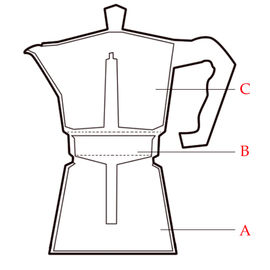Malcolm Lowry, Under the Volcano p16.
Thursday, June 29, 2006
Storm out of season
"He watched the clouds: dark swift horses surging up the sky. A black storm breaking out of its season! That was what love was like, he thought; love which came too late [...] It slaked no thirst to say what love was like which came too late."
Thursday, June 15, 2006
Mind-brain identity
 Axel, and others, have been revising for their 'philosophy of mind' exam. They've been revising Davidson, and others. They have been discussing mind-brain identity theories.
Axel, and others, have been revising for their 'philosophy of mind' exam. They've been revising Davidson, and others. They have been discussing mind-brain identity theories.I think I have discovered why those theories are rubbish. They assume what they set out to prove; they beg the question. The brain is in the head, and it is the process or events of the brain which we are seeking to identify with feelings, perceptions and such of the mind.
Where is the mind? The preliminary considerations of identity theorists always already locate the mind in the region of the head. The mind is not self-evidently in the head, since that is one of the things identity theorists are attempting to demonstrate. So if we lose this absurd assumption (absurd, given what they are trying to prove), there are two obvious difficulties: 1) when I plunge a hypodermic needle into my heroin-hungry arm, the 'pricking pain' of the needle is felt, if anywhere, in the arm. It is very certainly not in the head. If you knee-cap someone, then ask them where it hurts, the answer would be an incredulous "in my knee you fucking psychopath."
2) Not all mental 'events' are like this though. Anguish, for example, could not be said to be anywhere: it is non-material, governed only by our temporal inner sense.
So certain feelings can be felt around the body, and others are no more in the head than on Pluto. I struggle to see what kind of identity could hold between these so located mental events and a physical event in the brain.
Monday, June 05, 2006
Heidegger on Art

"From the dark opening of the worn insides of the shoes the toil-some tread of the worker stares forth. In the stiffly rugged heaviness of the shoes there is the accumulated tenacity of her slow trudge through the far-spreading and ever-uniform furrows of the field swept by a raw wind. On the leather lie the dampness and richness of the soil. Under the soles stretches the loneliness of the field-path as evening falls. In the shoes vibrates the silent call of the earth, its quiet gift of the ripening grain and its unexplained self-refusal in the fallow desolation of the wintry field. This equipment is pervaded by uncomplaining worry as to the certainty of bread, the wordless joy of having once more withstood want, the trembling before the impending childbed and shivering at the surrounding menace of death."
—Martin Heidegger, The Origin of the Work of Art .
Friday, June 02, 2006
A machinic portrait of dogmat

A) The grounding.
B) The ground.
C) Thought is de-grounded as it passes through the ground at (B), and emerges from the spout at (C). 'Percolation' introduces time into the schema. Not only does thought pass upwards through space, but it matures in the temporal process of percolation. The temporal is also where we find the sexual. As percolation - the 'ejaculation of thought' - comes to an end, the system produces an epiphenomenon, which is consciousness in the form of steam. Completion of the process is indicated by the crescendo of sounds emitted; Bergsonians should be interested to note how intimitely linked are the steam of consciousness and the 'music of the system'.
Subscribe to:
Comments (Atom)
